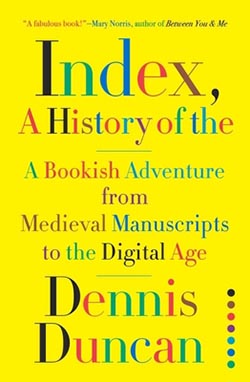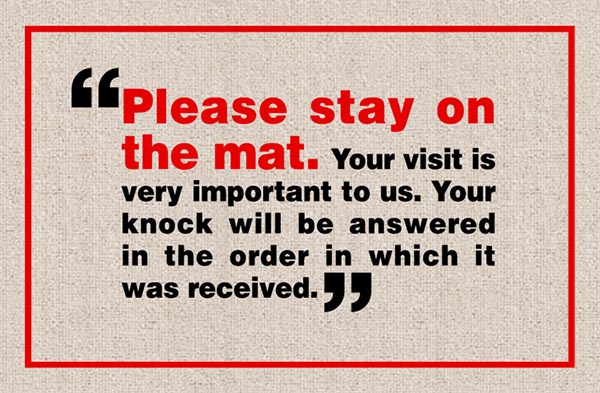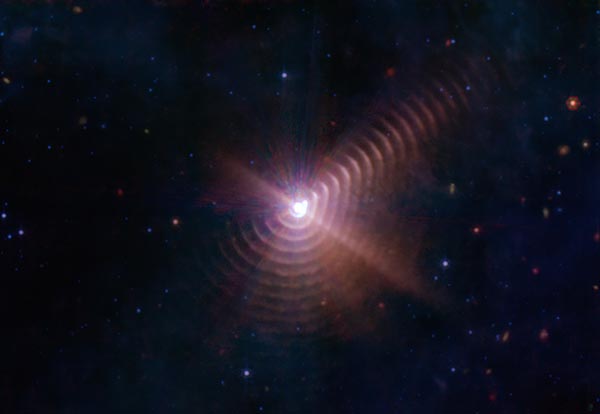License to Digital
Digital license plates have been a thing for a while, but now they are a legal thing, at least in California. Says Gizmodo:
Digital license plates have become legal for all cars in California, after a trial with a select number of drivers that’s lasted almost four years, according to a new report from the Los Angeles Times.
…There’s currently just one company, a firm called Reviver, authorized to offer digital license plates to California drivers. The license plates come in two models: battery-powered or hard-wired. The battery-powered option comes with a five-year or 50,000-mile battery life, according to Reviver.

Why would you want a digital license plate?
Users can change the messaging at the bottom of their plates through a phone app, and even give safety notices and alerts, such as marking the car as stolen.
Oh, the fun hackers could have! (“Um, officer, this car isn’t stolen.”) Presumably the plate number itself can’t be changed, although we wouldn’t put it past people to figure out how. We wonder, though, if cars with digital plates can be driven out of state, and what happens if they do.
Still, digital license plates are not cheap:
If a digital license plate sounds like something you want to invest in, there are some recurring costs. The digital plates originally cost $700 with a monthly fee of $7 during the trial period. But now the entire cost is tied up in a minimum 2-year subscription, which can be paid $20 per month for two years or $215 per year for four years if you want the battery-powered option. The hard-wired version is even more expensive, at $25 per month for two years or $275 per year for four years, and is currently only available to commercial businesses.
And while self-installation is an option, you can also get the battery-powered plate professionally installed for $99 or the hard-wired plate installed for $150.
Yes, by all means, let’s subscribe to license plates—it’s a safe bet most car features will be subscription-based before too long.
Web, Around the
 We should start an Around the Web Book Club. Here’s a just-published book that was just added to our reading list: Index, A History of the by Dennis Duncan.
We should start an Around the Web Book Club. Here’s a just-published book that was just added to our reading list: Index, A History of the by Dennis Duncan.
Says the NY Times in its review:
The document that today’s readers would recognize as an index arose simultaneously in Oxford and Paris in the 13th century, a consequence of the voluminous reading practiced in two newly formed institutions: the universities and the mendicant orders of Franciscan and Dominican friars. With so much reading, Duncan says, came the corresponding need “for the contents of books to be divisible, discrete, extractable units of knowledge.”
In the mid-15th century, the mass production born of Gutenberg’s press began to make the index a regular feature of the bound book. But its very ubiquity — and very utility — would make it an intellectual flash point. “As the index becomes more prevalent,” Duncan writes, “so too does the chance that readers will use it first. Rather than an aide-mémoire the index might be used as the way into a book.”
And of course a book about the index should have an index, and it doesn’t disappoint:
As for the index — or indexes — to “Index,” the primary one, by Paula Clarke Bain, is as rigorous as a nonfiction book’s should be, and as enchanting as the index to a book about indexes had better be. Teeming with gleeful, self-referential Easter eggs worthy of Borges or Lewis Carroll, it should be savored in full as dessert — or, if you are willing to be branded ignorant or dishonest, an aperitif.
We look forward to checking this out.
(Key)Board Meeting
Do you have such a cluttered desk that you have scant room for a keyboard? But do you also have a very wide desk? If yes, good news! Google Japan has developed the GBoard, a single-row keyboard. OK, admittedly, it’s a little long.

But, says Core 77:
Before you scoff, think of the use cases they cite: Cats are less likely to step on it, two people can type in tandem, it can be used to fish things out from under the couch, or to reach a light switch from a great distance!
It could also function as a back-scratcher.
The video is pretty amusing:
“The Enchantress of Numbers”
Last Tuesday, October 11, was Ada Lovelace Day, “an international celebration of the achievements of women in science, technology, engineering and maths (STEM).” It is also a day to commemorate Ada Lovelace, the world’s first computer programmer. Born in 1815, she was the daughter of Romantic poet George Gordon, Lord Byron, and in her teens met Charles Babbage, inventor of the Difference Engine and the later Analytical Engine, the first “computer” which used punch cards for input and output. (Babbage lacked the funds to actually build the machines he designed.) Mental Floss takes up the story:
Babbage was impressed with the brilliant young woman, and they corresponded for years, discussing math and computing as he developed the Analytical Engine. In 1842, Babbage gave a lecture on the engine at the University of Turin. Luigi Menabrea, a mathematician (and future Italian prime minister), transcribed the lecture in French. Ada, then in her late 20s and known as the Countess of Lovelace, was commissioned to translate the transcript into English. Lovelace added her own notes to the lecture, which ended up being three times as long as the actual transcript. It was publishedin 1843.
Lovelace’s notes made it clear that she understood the Analytical Engine as well as Babbage did. Furthermore, she understood how to make it do the things computers do. She suggested the data input that would program the machine to calculate Bernoulli numbers, which is now considered the first computer program. But more than that, Lovelace was a visionary: She understood that numbers could be used to represent more than just quantities, and a machine that could manipulate numbers could be made to manipulate any data represented by numbers. She predicted that machines like the Analytical Engine could be used to compose music, produce graphics, and be useful to science. Of course, all that came true—100 years later.
Sadly, she died of cancer in 1852 at just 36 years old.
Get a Charge Out of Graphene
Was it a good week for graphene news? It’s always a good week for graphene news! Just in time for Halloween, Skeleton Technologies has launched its SuperBattery, whose “Curved Graphene” material allows for 100 times faster charging than standard lithium-ion batteries. Says Graphene-Info:
SuperBattery is an innovative technology combining the characteristics of supercapacitors and batteries. SuperBattery has been developed to serve the needs of several sectors and is currently being used and/or tested in hybrid and fuel cell EVs, buses, trucks, and charging infrastructure.
Skeleton has also made no bones about its new partnership with Shell, and is joining a Shell-led consortium to offer electrification solutions for mining sites.
Taavi Madiberk, CEO and co-founder of Skeleton Technologies, says: “Skeleton goes after the high-power part of the energy storage market and we estimate the addressable market size to be 95 Bn EUR. Now, the key is to move ahead with the scale-up and we aim to develop our business around SuperBattery through key partners such as Shell."
Decarbonization in mining largely relies upon electrification and renewables, which are the best way to reduce operational emissions. Electrification of heavy-duty applications is both a necessity and a major challenge for the mining industry.
DART II
A couple of week ago, we mentioned NASA’s Double Asteroid Redirection Test (DART), wherein they slammed a spacecraft into the asteroid Dimorphos. At that time, NASA still had yet to determine the extent to which the mission accomplished its goal of changing the asteroid’s orbit, the goal being to see if this would be a practical way of diverting any asteroids that may be hurtling toward Earth. And, as it happens, the mission was a success! Says the NY Times:
The mission’s target, Dimorphos, was a diminutive space rock, just more than 500 feet wide. It was and still is harmless, posing no risk to Earth. Before DART’s impact, Dimorphos orbited a larger asteroid called Didymos every 11 hours and 55 minutes. An onboard camera took pictures of the fast-approaching asteroid on the day of the crash. As the spacecraft approached, the asteroid’s surface filled the screen, boulders coming into focus before the transmission cut out. DART and its camera had smashed into the very surface it was showing.
The spacecraft not only connected with Dimorphos, it altered the space rock’s orbit, shortening its trip around a larger asteroid by 32 minutes.
Which was exactly what they had hoped would happen.
Scientists, according to Mr. Nelson, would have considered DART a huge success if it had only shortened Dimorphos’s orbit by 10 minutes. The reality — around three times that shift — delighted the team that managed the mission.
“If an Earth-threatening asteroid was discovered and we could see it far enough away, this technique could be used to deflect it,” Mr. Nelson said.
It’s nice when we can get some good news for a change.
Take it to the Mat
Someone is ready for going back to office life:

Pick up your mat at Deb's Unique Gifts. A steal at $20.99.
“You may be videorecorded for training purposes.”
Ecommerce Can’t Take a Joke
Says Boing Boing:
Quenlin Blackwell, a 21-year-old TikToker with 7.9 million followers, posted a video saying she “accidentally” bought a couch for $100,000. She is sobbing in the video and asking her followers to send her money to pay for it.
First of all, insert your own stoner joke about the word “TikToker.” Second of all, how does someone accidentally buy a $100,000—or any—couch? As she says in the video:
I just put an offer on a couch, and I was joking, but I put in my card information, and it just charged my f—g account! I almost crashed my car when I saw it because I don’t have the — Oh my god. I was joking. I was joking.
We’re not entirely (or at all) certain how entering your credit card info and clicking “Buy Now” is a joke, or if she thinks that an ecommerce system has been programmed for humor. The story headline referred to her as a TikTok “influencer,” so is the joke getting her influencees to help bail her out? Does she have Jedi-level powers of influence? Is that what a TikTok influencer is?
It’s a Good Thi— Oh My God!!!!
Here is one of the strangest headlines we’ve come across in a while. From Food & Wine: “Martha Stewart Partners With Liquid Death to Release ‘Dismembered Moments’ Candle.” Liquid Death is apparently a brand of canned water, and for Halloween has released a limited edition candle that is an all-black, life-sized model of a severed human hand holding a can of Liquid Death.

Photo: Liquid Death
“Don’t worry, each one is made by hand.” Stewart did a pretty gruesome video for it:
We don’t want to know what the fragrance is.
Hold a Candle to COVID
Speaking of candles, we came across an interesting story in which a researcher wrote a paper on how bad Yankee Candle reviews can be used to track surges of COVID infections.
It began with tweets that showed screenshots of Yankee Candle reviews saying things like “This candle had no scent when lit. Very disappointed!” Continues News@Northeastern:
This wasn’t a new discovery: Over the past year, other Twitter users had noticed reviews on Amazon claiming that Yankee Candles had “no smell,” and wondered if there was a connection with COVID-19, which can cause anosmia, or loss of smell.
Nicholas Beauchamp, assistant professor of political science at Northeastern University, noticed it, decided to conduct a little research study.
Beauchamp took the Twitter joke and turned it into a full paper—presented at this week’s “International AAAI Conference on Web and Social Media”—that examines the clear link between the “no smell” reviews and upticks in COVID-19 cases.
…He downloaded a Chrome extension that grabbed 9,837 Amazon reviews of the top four Yankee Candles from 172 weeks between 2018 and 2021, then let it run while he watched TV. He then calculated the percentage per week of reviews that mentioned “no smell” or “no scent,” and plotted that over COVID-19 cases over the same period. Finally, he controlled for the seasonal upticks of both candle purchases and illness.
Beauchamp found that the hunch correlation really was causation: after controlling for seasonality, it appeared that COVID-19 cases predicted more “no smell” reviews. For every 100,000 new COVID-19 cases per week, he found, “no smell” reviews increased by a quarter of a percentage point in the next week.
But was it predictive? Not at first.
The COVID-19 cases preceded “no smell” reviews, not the other way around, making the information less valuable for public health purposes.
However, when Beauchamp added the past six months, the situation reversed.
“When I added those next six months, which includes the Omicron wave, it is now predictive in the sense that, in theory, the reviews give us a slight heads up,” he says. He corroborated the results by conducting the same analysis with perfume reviews.
Still, he does not take the research all that seriously, as potentially useful as it may be to epidemiologists.
“It starts with a viral tweet, and it ends with a punchline,” he says. “Mostly, I consider the paper to be an extended joke tweet.”
Yeah, but would he buy a $100,000 couch as a joke?
Around the Webb, Part the Continuation: Dust in the Wolf
The James Webb Space Telescope is up and running and recently turned its gaze toward the binary star Wolf-Rayet (WR) 140. (Wolf–Rayet stars are “are a rare heterogeneous set of stars with unusual spectra showing prominent broad emission lines of ionised helium and highly ionised nitrogen or carbon.”) Astronomer Ryan Lau of NSF’s NOIRLab, principal investigator of the Webb Early Release Science program, was initially perplexed at the images the telescope captured. He writes, “There seemed to be a strange-looking diffraction pattern, and I worried that it was a visual effect created by the stars’ extreme brightness.”

Credit: NASA, ESA, CSA, STScI, JPL-Caltech.
However, as soon as I downloaded the final data I realized that I was not looking at a diffraction pattern, but instead rings of dust surrounding WR 140 – at least 17 of them.
I was amazed. Although they resemble rings in the image, the true 3D geometry of those semi-circular features is better described as a shell. The shells of dust are formed each time the stars reach a point in their orbitwhere they are closest to each other and their stellar winds interact. The even spacing between the shells indicates that dust formation events are occurring like clockwork, once in each eight-year orbit. In this case, the 17 shells can be counted like tree rings, showing more than 130 years of dust formation.
One of the biggest surprises was how many shells the telescope was able to detect. The shells furthest from the binary star have traversed over 70,000 times the distance from Earth to the Sun, at speeds of around 6 million miles per hour, through the harsh environment around a WR star—some of the hottest and most luminous stars known. The survival of these distant shells shows that the dust formed by WR binaries like WR 140 will likely survive to enrich the surrounding interstellar environment.
The things we can do.
Prawn Shop
Do you like shrimp? Neck pillows? This is perfect for your next flight: the Bettli Shrimp Meat U Shaped Neck Pillow Throw Pillow Cushion Plush.

- Soft: Comfortable and fun to wear. Full circle of thick PP cotton for support every time.
- Fun: Brighten decor in your home and then pack for a trip.
- Easy to clean: Surface clean with mild soap and water
Or cocktail sauce. A steal at $12.99 on Amazon.
This Week in Printing, Publishing, and Media History
October 10
1813: Italian composer and philanthropist Giuseppe Verdi born.
1924: “Actor,” “director,” and “screenwriter” Ed Wood born.
1985: American actor, director, producer, and screenwriter Orson Welles dies (b. 1915).
October 11
1910: Former President Theodore Roosevelt becomes the first U.S. president to fly in an airplane. (Most people stay seated in an airplane.)
1950: CBS’s mechanical color system is the first to be licensed for broadcast by the U.S. Federal Communications Commission.
1961: American comedian Chico Marx dies (b. 1887).
1967: Typographer, known for work on Times New Roman font, Stanley Morison dies (b. 1889).
October 12
322 BC: Athenian statesman Demosthenes dies (b. 384 BC).
1892: The Pledge of Allegiance is first recited by students in many US public schools, as part of a celebration marking the 400th anniversary of Columbus's voyage.
1924: French journalist, novelist, and poet, Nobel Prize laureate Anatole France dies (b. 1844).
1979: The Hitchhiker’s Guide to the Galaxy, the first of five books in Douglas Adams’ Hitchhiker’s Guide to the Galaxy comedy science-fiction trilogy, is published.
October 13
1881: First known conversation in modern Hebrew by Eliezer Ben-Yehuda and friends.
1892: Edward Emerson Barnard discovers first comet discovered by photographic means.
1903: The Boston Red Sox win the first modern World Series, defeating the Pittsburgh Pirates in the eighth game.
1983: Ameritech Mobile Communications (now AT&T) launched the first US cellular network in Chicago.
October 14
1582: Because of the adoption of the Gregorian calendar, this day does not exist in this year in Italy, Poland, Portugal, and Spain.
1884: George Eastman receives a U.S. Government patent on his new paper-strip photographic film.
1888: Louis Le Prince films the first motion picture, Roundhay Garden Scene.
1894: American poet and playwright e. e. cummings born.
1912: The Power of Paper: Former president Theodore Roosevelt is shot and mildly wounded by John Flammang Schrank. Regardless, Roosevelt delivers his scheduled speech—the text of which in his coat pocket blunted the impact of the bullet.
1926: The children's book Winnie-the-Pooh, by A. A. Milne, is first published.
1947: Chuck Yeager becomes the first person to exceed the speed of sound.
1968: The first live TV broadcast by American astronauts in orbit is performed by the Apollo 7 crew.
October 15
99 BC (probable): Roman poet and philosopher Lucretius born.
70 BC: Roman poet Virgil born.
1582: Adoption of the Gregorian calendar begins, eventually leading to near-universal adoption.
1783: The Montgolfier brothers’ hot air balloon makes the first human ascent, piloted by Jean-François Pilâtre de Rozier.
1844: German composer, poet, and philosopher Friedrich Nietzsche born.
1878: The Edison Electric Light Company begins operation.
1881: English novelist and playwright P. G. Wodehouse born.
1908: Canadian-American economist and diplomat John Kenneth Galbraith born.
1923: Italian novelist, short story writer, and journalist Italo Calvino born.
1926: French historian and philosopher Michel Foucault born.
1939: The New York Municipal Airport (later renamed LaGuardia Airport) is dedicated (and has not been updated since).
1956: FORTRAN, the first modern computer language, is first shared with the coding community.
1964: American composer and songwriter Cole Porter dies (b. 1891).
October 16
1758: American lexicographer Noah Webster born.
1847: Charlotte Brontë’s novel Jane Eyre is published in London.
1854: Irish playwright, novelist, and poet Oscar Wilde born.
1923: The Walt Disney Company is founded.
1927: German novelist, poet, playwright, and Nobel Prize laureate Günter Grass born.
1950: The Lion, the Witch and the Wardrobe by C.S. Lewis is published.










Discussion
Join the discussion Sign In or Become a Member, doing so is simple and free